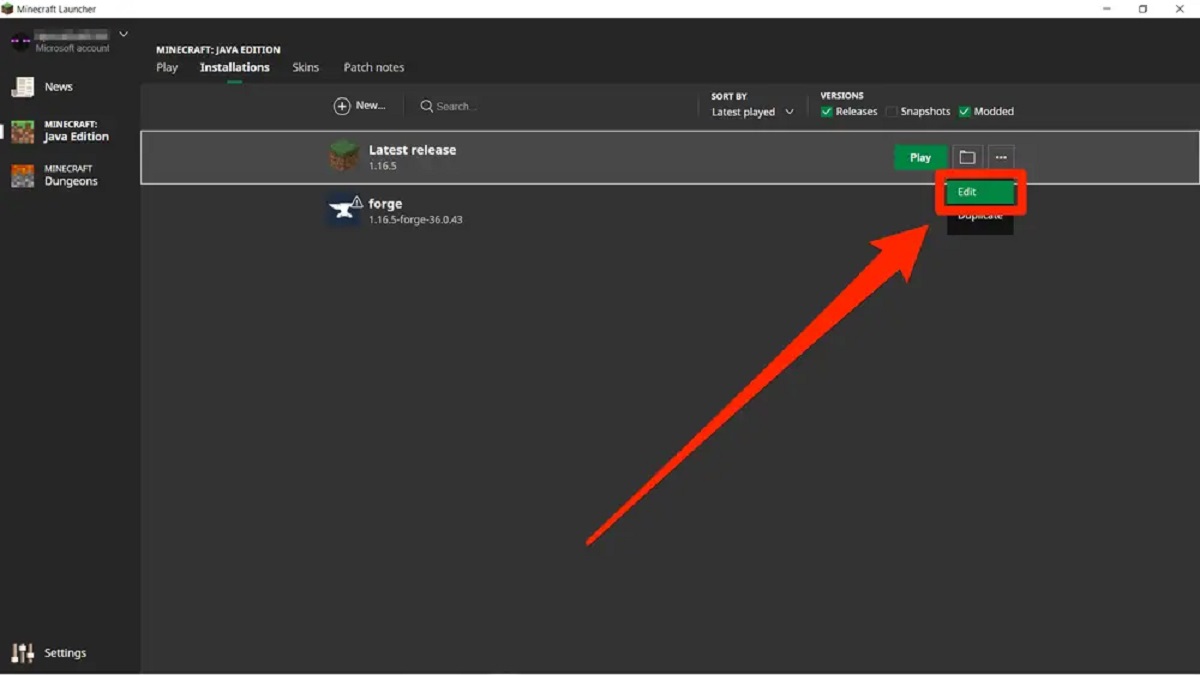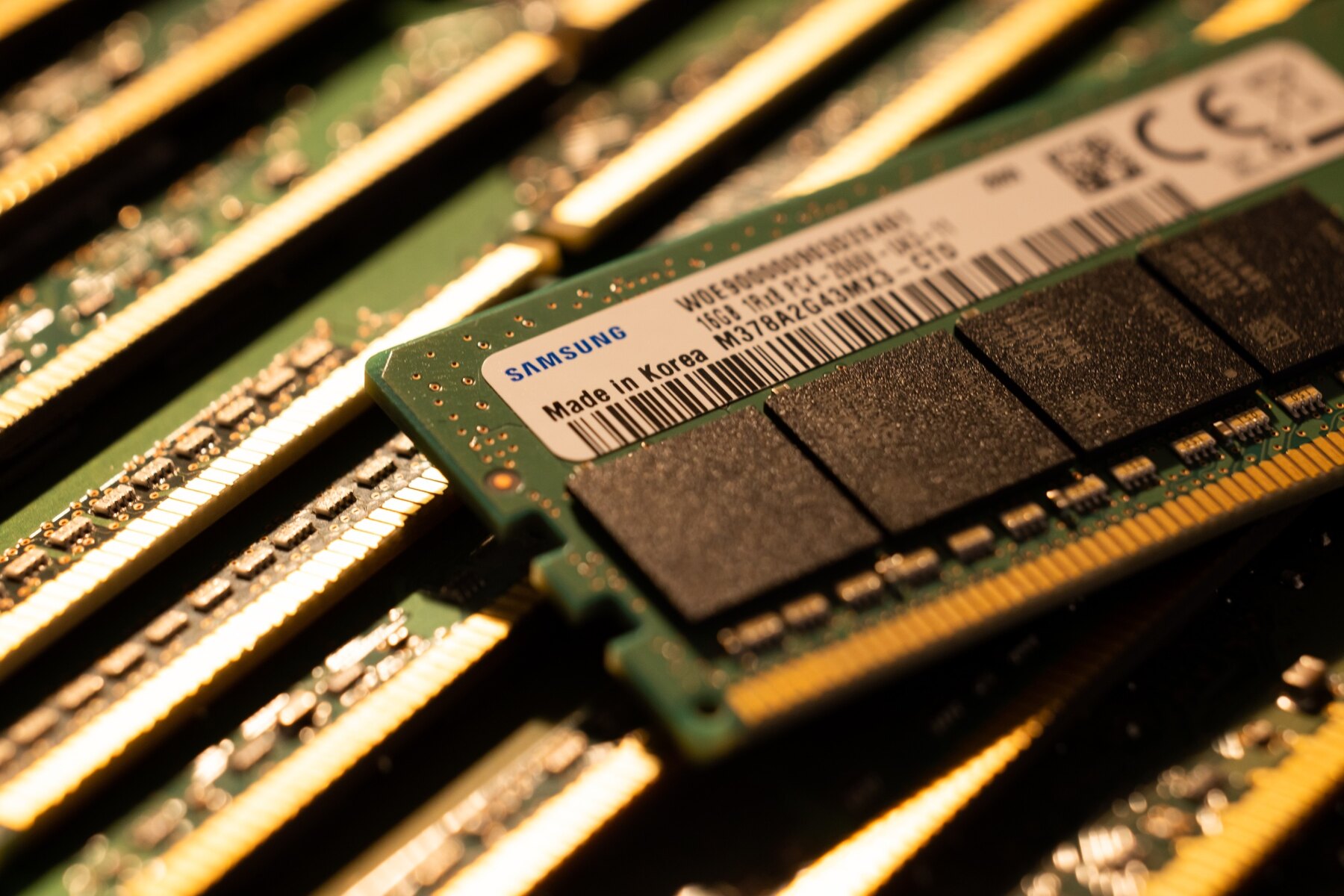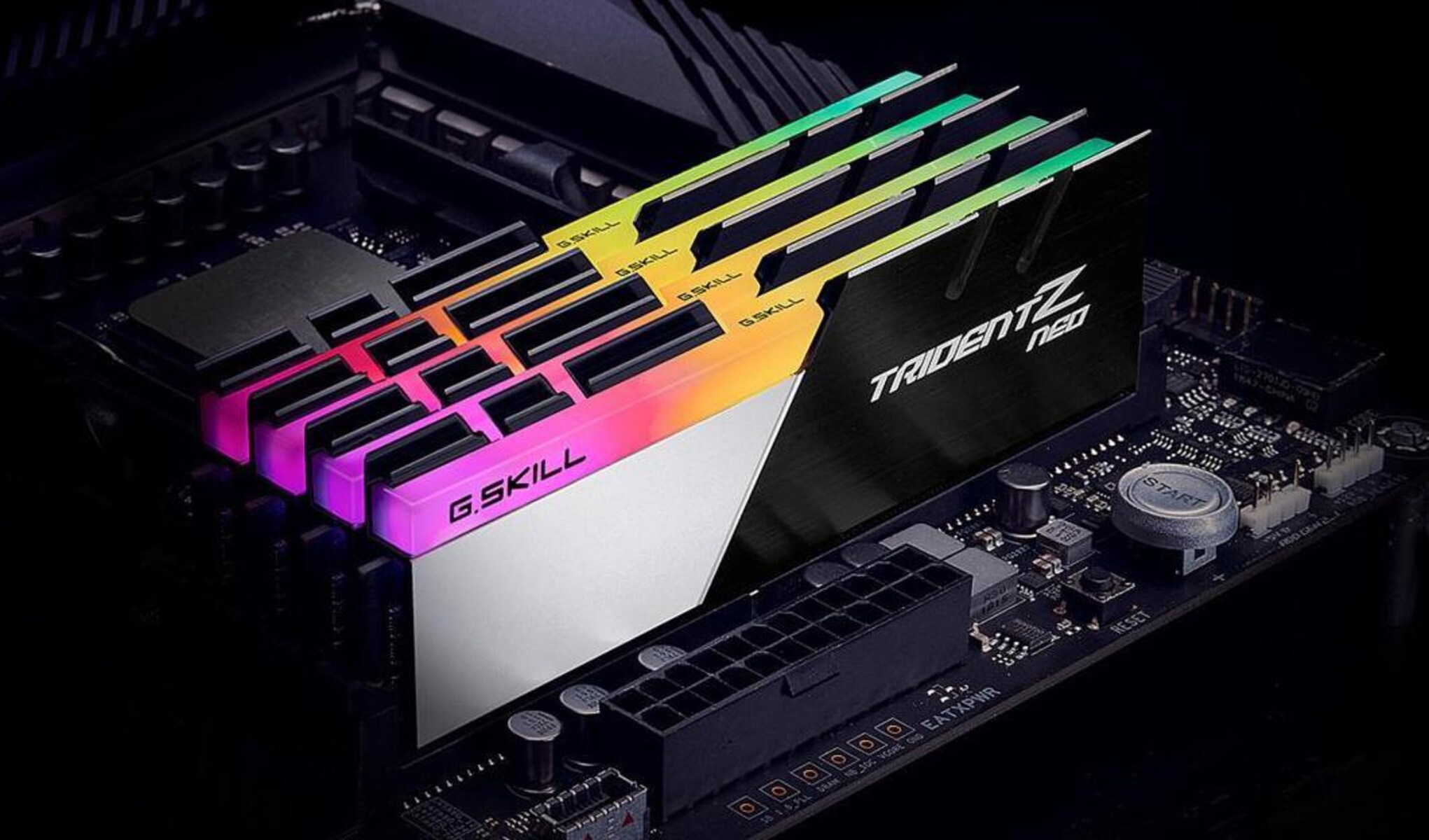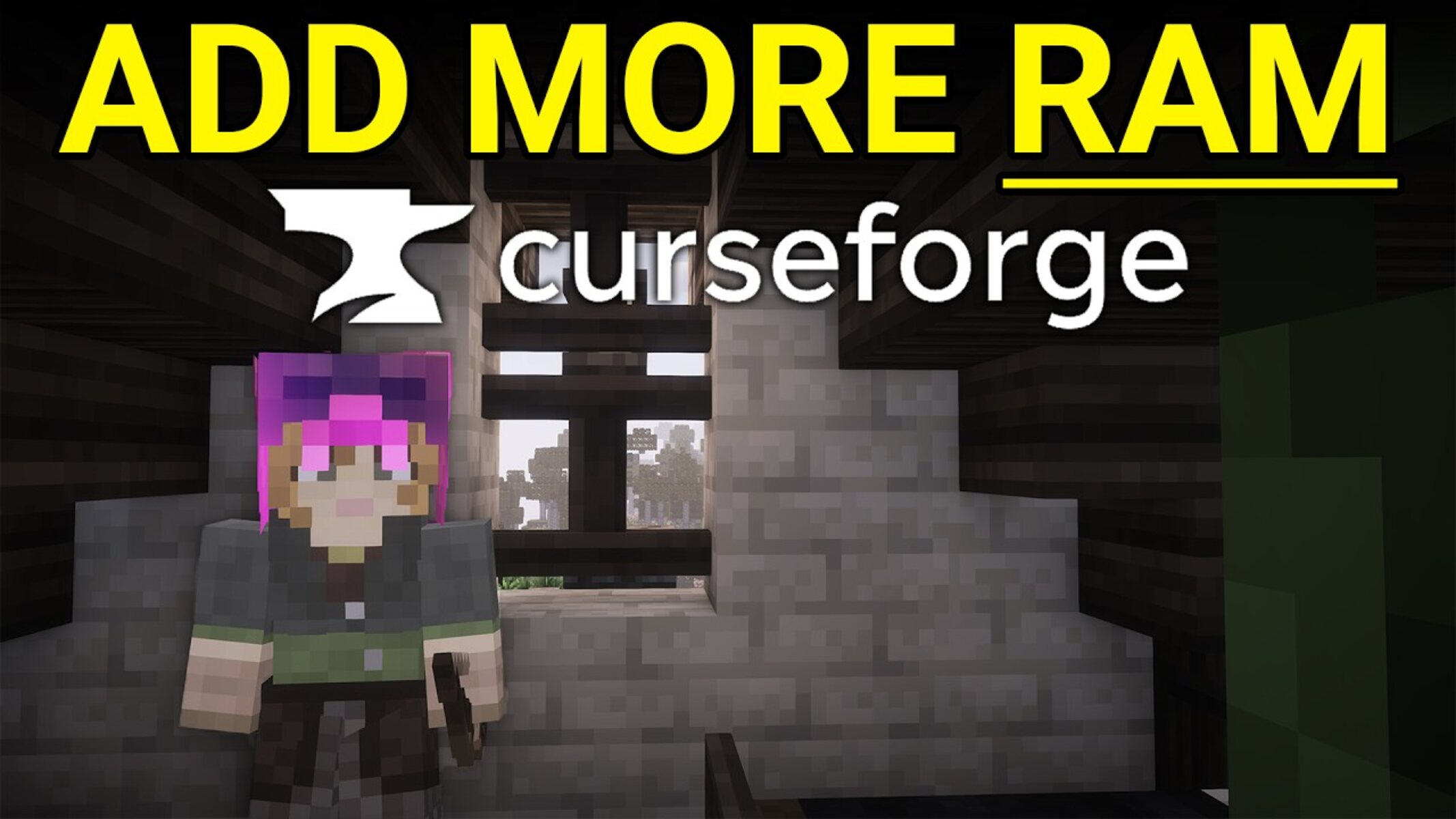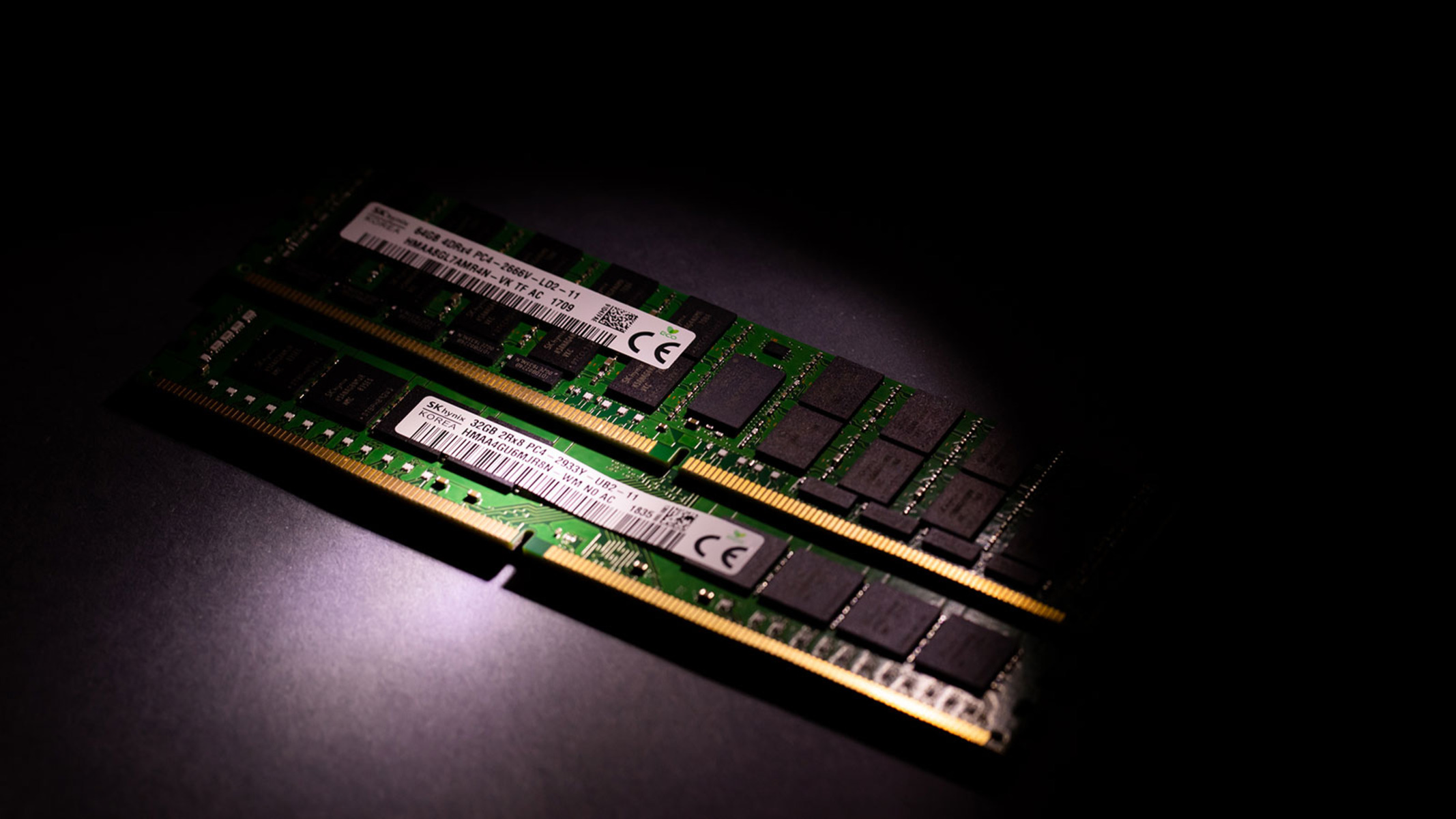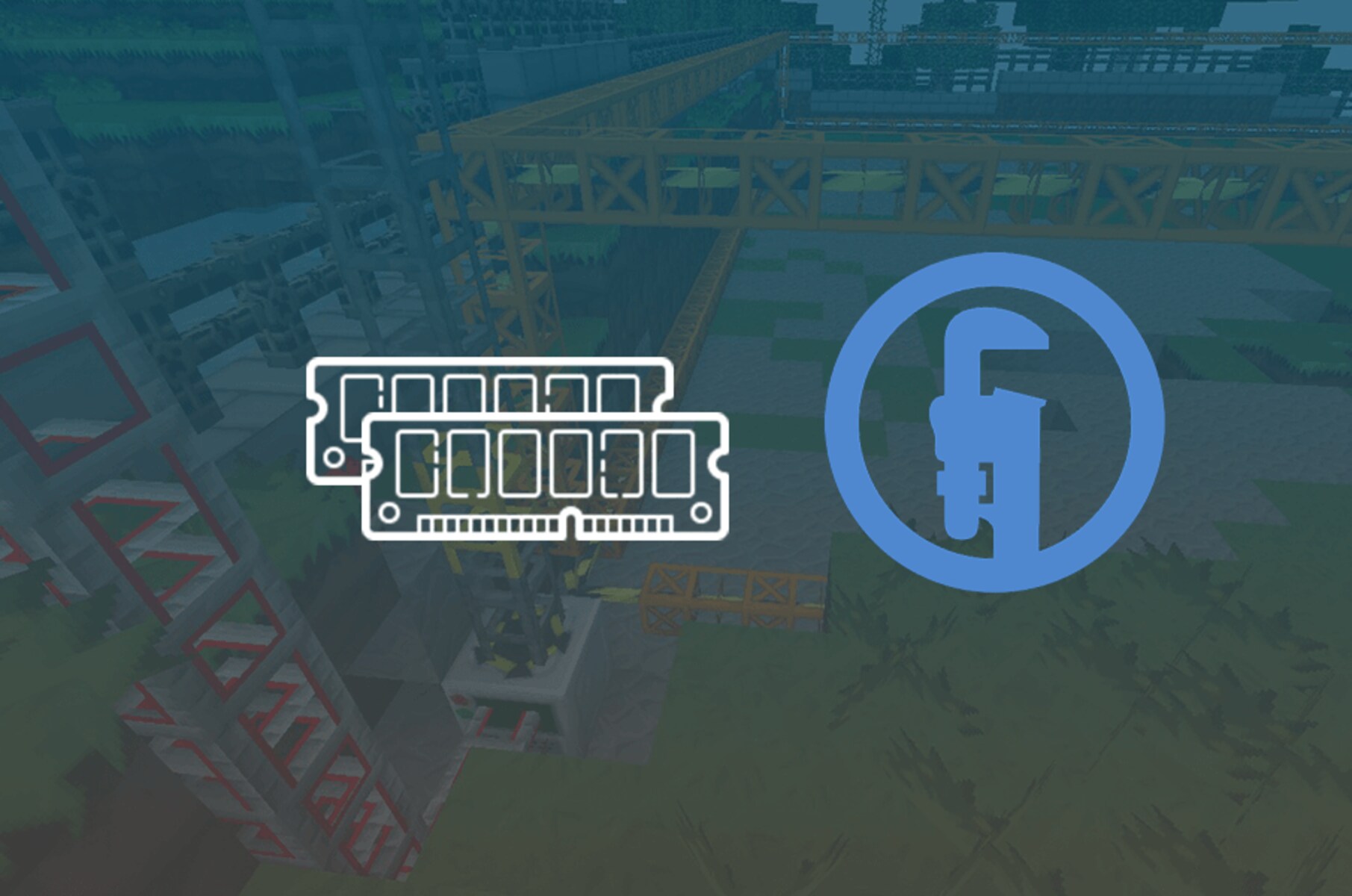Introduction
Welcome to the world of Minecraft! If you’re an avid player or someone who runs their own Minecraft server using Forge, you may have encountered performance issues that can dampen your gaming experience. One common problem is the lack of available RAM, or Random Access Memory, which is essential for smooth gameplay and server operation.
In this article, we will explore the importance of allocating more RAM to your Minecraft server running Forge and guide you through the process. By increasing the amount of RAM, you can improve the server’s performance, reduce lag, and provide a better gaming experience for yourself and your fellow players.
Allocating additional RAM to your Minecraft server for Forge is not as complicated as it may sound. Whether you’re a beginner or an experienced server administrator, with a few simple steps, you’ll be on your way to optimizing your server’s memory usage.
Before diving into the steps, it’s important to understand why allocating more RAM is crucial for your Minecraft server running Forge.
When you launch Minecraft with Forge, the game not only uses your computer’s resources but also requires additional memory for the modifications and extensions provided by Forge. Without enough RAM, the server may struggle to load and run mods efficiently, resulting in lag, freezing, and even crashes.
By increasing the RAM allocation, you give your server more space to store data and process complex operations, allowing for smoother gameplay and improved mod functionality. This can make a significant difference, especially if you have a large number of players or use resource-intensive mods on your server.
Now that we understand the significance of allocating more RAM, let’s dive into the steps for increasing your Minecraft server’s memory allocation.
Why allocate more RAM to a Minecraft server?
The allocation of RAM plays a crucial role in the performance and stability of your Minecraft server. Here are a few reasons why increasing the RAM allocation is so important:
1. Smooth gameplay: Minecraft servers running Forge can be resource-intensive, especially when using mods and plugins. Allocating more RAM ensures that the server has enough memory to load and run these modifications smoothly. This leads to a seamless gaming experience for both you and your fellow players, as lag and freezing are minimized.
2. Better mod functionality: Forge is a powerful modding platform that allows you to enhance and customize your Minecraft gameplay. However, mods often require additional memory to work optimally. By allocating more RAM, you provide the necessary resources for these mods to function properly, enabling you to fully enjoy their features and enhancements.
3. Larger player capacity: If you have a popular Minecraft server or host events with a high number of players, increasing the RAM allocation becomes even more crucial. More RAM allows your server to handle a larger player base without experiencing performance issues or server crashes. This ensures that all players can join the server and enjoy the game without any interruptions.
4. Resource-intensive mods: Some mods, such as those that add complex machinery or generate expansive worlds, require a significant amount of RAM to function optimally. Without sufficient memory, these resource-intensive mods may cause the server to slow down or crash. Allocating more RAM grants your server the headroom it needs to handle these mods without compromising performance.
5. Future scalability: As your Minecraft server and player base grow, so will the demands on your resources. By allocating more RAM from the beginning, you’re setting yourself up for future scalability. This means that as you add more mods, plugins, and players, you will have the necessary resources to handle the increased load, ensuring a smooth and enjoyable gaming experience for everyone.
With these reasons in mind, it’s clear that allocating more RAM to your Minecraft server running Forge is essential for optimizing performance, supporting mods, accommodating higher player capacities, and preparing for future expansion. Now, let’s move on to the steps involved in increasing your RAM allocation.
How much RAM does your Minecraft server need?
Determining the right amount of RAM to allocate to your Minecraft server running Forge is crucial for optimal performance. The amount of RAM you need depends on several factors, including the number of players, the complexity of your mods, and the size of your server world. Here’s a guide to help you determine how much RAM your Minecraft server needs:
1. Number of players: The more players you have on your server, the more RAM it will require. As a general rule of thumb, allocate at least 1-2GB of RAM per 10 players. For example, if you have a server with 20 players, you should consider allocating 2-4GB of RAM to ensure smooth gameplay and prevent lag.
2. Complexity of mods: Mods can vary greatly in terms of their resource requirements. Some mods are lightweight and won’t put much strain on your server’s resources, while others are more resource-intensive. Take into account the mods you’re using and their specific RAM recommendations. It’s a good idea to allocate extra RAM if you’re running multiple complex mods to ensure smooth performance.
3. Size of the server world: The size and complexity of your Minecraft world can also influence the RAM requirements. If you have a large world with a lot of structures, redstone contraptions, or complex terrain generation, you may need more RAM to handle the processing and rendering of the world. Consider allocating additional RAM for larger worlds or those with intricate structures and landscapes.
4. Additional plugins and features: If you’re using additional plugins or server features alongside Forge and mods, keep in mind that these can also consume additional RAM. Features like anti-griefing plugins, economy systems, or custom plugins may require some extra memory. Account for these plugins when determining your RAM allocation.
5. Future growth: It’s always a good idea to allocate some additional RAM for future growth and expansion. As your server and player base grow, you may add more mods or plugins, which can increase the resource requirements. By allocating some headroom from the start, you can accommodate future additions without having to adjust your RAM allocation frequently.
With these considerations in mind, evaluate your specific situation, including the number of players, mods used, world size, and any additional plugins or features. Aim to strike a balance between ensuring optimal performance and not allocating excessive RAM that goes unused. Keep in mind that allocating too much RAM can be wasteful and may hinder overall performance.
Next, we’ll move on to the steps involved in allocating more RAM to your Minecraft server running Forge.
Step 1: Check your computer’s available RAM
Before you can allocate more RAM to your Minecraft server running Forge, it’s important to determine how much RAM your computer currently has available. This information will help you make an informed decision about how much RAM you can allocate to your server.
Here are the steps to check your computer’s available RAM:
1. Open Task Manager: On Windows, you can open Task Manager by pressing `Ctrl+Shift+Esc` or by right-clicking on the taskbar and selecting “Task Manager”. On Mac, press `Command+Space` to open Spotlight, type “Activity Monitor”, and press Enter.
2. Navigate to the Performance tab: In Task Manager (Windows) or Activity Monitor (Mac), locate the Performance tab or section. This tab provides information about your computer’s system resources, including RAM.
3. Look for the RAM section: In the Performance tab, find the section that displays information about your computer’s RAM. This section will show you how much RAM is currently in use, as well as the total available RAM.
4. Note the available RAM: Take note of the amount of available RAM displayed in Task Manager or Activity Monitor. This will be the amount you can allocate to your Minecraft server.
It’s essential to have enough available RAM to allocate to your server without overloading your system. Ideally, you should have a significant amount of unused RAM to ensure optimal performance and avoid any potential performance issues or crashes.
If you find that your computer has limited available RAM, you may need to consider closing any unnecessary applications or processes running in the background to free up additional resources. This will provide more room for your Minecraft server to utilize the allocated RAM effectively.
Once you have determined the amount of available RAM on your computer, you can proceed to the next step, which is installing Java, a necessary component for running Minecraft servers.
Step 2: Install Java
In order to run a Minecraft server, including Forge, you will need to have Java installed on your computer. Java is a programming language and platform that Minecraft relies on for its functionality. Here’s how you can install Java:
1. Visit the Java website: Open a web browser and go to the official Java website at www.java.com.
2. Download Java: On the Java website, click on the “Java Download” button. The website should automatically detect your operating system and offer the correct Java version for you to download.
3. Choose your installation options: Once the Java installer is downloaded, run the installer and follow the on-screen instructions. You may be asked to choose the installation directory, agree to the terms and conditions, or customize the installation options. It is recommended to go with the default settings unless you have specific requirements.
4. Complete the installation: After selecting the installation options, the Java installer will proceed to install the Java Runtime Environment (JRE) on your computer. This process may take a few minutes. Once the installation is complete, you will receive a notification confirming the successful installation of Java.
5. Verify the Java installation: To ensure that Java is installed correctly, open a command prompt (Windows) or terminal (Mac). Type java -version and press Enter. You should see the installed Java version displayed in the command prompt or terminal. This confirms that Java is installed and ready to be used.
By installing Java, you have obtained the necessary platform to run your Minecraft server. Java provides the underlying framework and technology that allows Minecraft and Forge to function properly. It is important to keep Java updated to the latest version, as it includes important security updates and performance improvements.
Once you have successfully installed Java, you can move on to the next step, which involves allocating more RAM to your Minecraft server for optimal performance.
Step 3: Allocate more RAM to your Minecraft server
Allocating more RAM to your Minecraft server running Forge will significantly improve its performance, especially when using resource-intensive mods or hosting multiple players. Adjusting the RAM allocation can be done by modifying the server start-up settings. Here’s how you can allocate more RAM to your Minecraft server:
1. Locate the server start-up file: Navigate to the directory where your Minecraft server files are located. Look for a file named “forge” or “minecraft_server,” which is typically a Java executable file with a .jar extension.
2. Open the server start-up file: Right-click on the file and open it with a text editor of your choice, such as Notepad (Windows) or TextEdit (Mac).
3. Locate the start-up command: Within the file, search for the line that starts with the command to launch the server. It typically looks like this: java -jar forge-, where
4. Adjust the RAM allocation: To allocate more RAM to your server, add the following argument after the start-up command: -Xmx, where -Xmx4096M.
5. Save the changes: After adding the RAM allocation argument, save the server start-up file and close the text editor.
By modifying the start-up settings, you are instructing Java to allocate the specified amount of RAM when launching the Minecraft server. This allows your server to utilize the allocated memory for smoother performance and improved stability.
It’s important to note that allocating too much RAM can have negative effects on performance, as it may leave fewer resources for your computer’s operating system and other applications. It’s recommended to allocate an appropriate amount of RAM based on your server’s needs, as discussed in the previous section.
Next, we’ll explore how to adjust the start-up settings further to fine-tune your Minecraft server’s performance.
Step 4: Adjusting start-up settings
Once you have allocated more RAM to your Minecraft server running Forge, you can further optimize its performance by adjusting the start-up settings. These settings allow you to fine-tune various aspects of your server, such as garbage collection, thread optimization, and more. Here’s how you can adjust the start-up settings:
1. Open the server start-up file: Locate the server start-up file that you edited in the previous step and open it with a text editor.
2. Modify the start-up command: Look for the line that contains the start-up command, similar to java -jar forge-.
3. Add additional arguments: After the RAM allocation argument that you added in the previous step, you can add additional arguments to optimize your server’s performance. Here are a few commonly used arguments:
-XX:+UseConcMarkSweepGC: This argument enables the use of the Concurrent Mark Sweep (CMS) garbage collector, which can help improve server performance by reducing pauses during garbage collection.-XX:+UseParNewGC: This argument enables the use of the parallel young generation garbage collector, which can improve performance by utilizing multiple threads for garbage collection.-XX:ParallelGCThreads=: This argument specifies the number of threads to use for garbage collection. Replace-Dfml.ignoreInvalidMinecraftCertificates=true: If you encounter issues with outdated or invalid certificates during server startup, adding this argument can bypass certificate validation.
4. Save and close the file: After adding the desired start-up arguments, save the file and close the text editor.
These additional start-up arguments can help optimize your server’s performance and address specific issues you may encounter. It’s important to note that not all arguments may be applicable or beneficial for every server. Experiment with different settings and monitor the server’s performance to find the best configuration for your specific needs.
With the start-up settings adjusted, you’re now ready to move on to the next step, which involves verifying the RAM allocation on your Minecraft server.
Step 5: Verify the RAM allocation
After allocating more RAM to your Minecraft server running Forge and adjusting the start-up settings, it’s important to verify that the changes have been implemented correctly. Verifying the RAM allocation ensures that your server is utilizing the allocated memory as intended. Here’s how you can verify the RAM allocation:
1. Start your Minecraft server: Launch your Minecraft server using the start-up file you modified in the previous steps. Allow the server to fully start up and reach the main menu.
2. In-game verification: Once you’re in the game, open the debug screen by pressing the F3 key (Windows) or fn + F3 key (Mac). The debug screen will display various information about your Minecraft server.
3. Locate the memory usage: Look for the section on the debug screen that displays memory usage. You should see information about the allocated memory (Xmx), total memory, and free memory.
4. Check the allocated memory: Verify that the allocated memory matches the amount you specified in the start-up settings. Ensure that the Xmx value reflects the correct amount of RAM you wanted to allocate to your server.
If the allocated memory matches your intended value, then the RAM allocation has been successfully applied to your Minecraft server. Congratulations! You have optimized your server to utilize the allocated RAM for better performance.
However, if the allocated memory does not match your intended value, it’s possible that there was an error in the start-up configuration. Double-check the start-up file and make sure the RAM allocation argument is properly written and placed in the command line. Correct any mistakes, save the file, and restart your Minecraft server to apply the changes.
It’s important to validate the RAM allocation to ensure that your server is running optimally and utilizing the allocated resources. With the RAM allocation verified, you can now move on to the final step, which involves testing the performance of your Minecraft server.
Step 6: Test the performance of your Minecraft server
Now that you have allocated more RAM and adjusted the start-up settings of your Minecraft server running Forge, it’s time to test its performance and ensure that the changes have positively impacted gameplay. Testing the performance of your server allows you to identify any potential issues and make further optimizations if necessary. Here are some steps to test the performance of your Minecraft server:
1. Join the server: Connect to your Minecraft server using your preferred Minecraft client. Make sure you have the necessary mods and resources installed to accurately test server performance.
2. Observe gameplay: Spend some time exploring and playing on the server. Pay attention to any noticeable improvements or changes in performance compared to before the RAM allocation and start-up settings adjustments.
3. Monitor server metrics: Use server monitoring tools or mods to assess key performance metrics, such as server tick rate, memory usage, and CPU utilization. These metrics provide insights into the server’s health and can help identify any performance bottlenecks or issues.
4. Test with multiple players: Invite some friends or fellow players to join the server. Have them undertake various activities, such as building structures, exploring, or interacting with mods, to simulate real-world server usage. Observe how the server handles the increased player load and whether any performance issues arise.
5. Monitor for lag and stability: Keep an eye out for any signs of lag, such as delayed block updates, stuttering movement, or delayed response to player actions. Check if the server remains stable without crashes or excessive latency during gameplay.
6. Gather feedback: Encourage players on your server to provide feedback on their experience. Ask them about any performance improvements they noticed or if they experienced any issues during gameplay. This feedback can help you fine-tune your server’s performance even further.
By testing the performance of your Minecraft server, you can ensure that the recent changes you made to the RAM allocation and start-up settings have had a positive impact. If you encounter any performance issues during testing, consider revisiting the previous steps to further optimize your server’s configuration.
Remember, optimizing server performance is an ongoing process. As you continue to add more mods, plugins, and players, it’s important to regularly monitor and fine-tune your server settings to maintain optimal performance and provide a smooth gaming experience.
Congratulations! You have successfully allocated more RAM to your Minecraft server running Forge, adjusted the start-up settings, and tested its performance. Enjoy your improved Minecraft experience!
Conclusion
Allocating more RAM to your Minecraft server running Forge is a crucial step in optimizing its performance and ensuring a smooth gaming experience. By following the steps outlined in this guide, you can allocate additional memory to your server, adjust the start-up settings, and test its performance. This will help reduce lag, prevent crashes, and improve the overall stability of your Minecraft server.
Remember to consider factors such as the number of players, complexity of mods, and size of your server world when determining the appropriate amount of RAM to allocate. Balancing the RAM allocation with the needs of your server is essential for achieving optimal performance without overloading your system.
Additionally, experimenting with start-up settings allows you to fine-tune your server’s performance. Optimizations such as the garbage collector option, thread utilization, and other start-up arguments can further enhance the efficiency and stability of your server.
Lastly, testing the performance of your Minecraft server, both solo and with multiple players, is crucial to ensure that the changes you’ve made have positively impacted gameplay. Monitoring key metrics, observing gameplay, and gathering feedback from players will help identify any potential performance issues, allowing you to make necessary adjustments to maintain an enjoyable server environment.
By following these steps and continuously monitoring and optimizing your Minecraft server, you can provide a seamless and immersive gaming experience for yourself and your fellow players. Enjoy exploring new mods, building incredible structures, and embarking on thrilling adventures in the exciting world of Minecraft!







